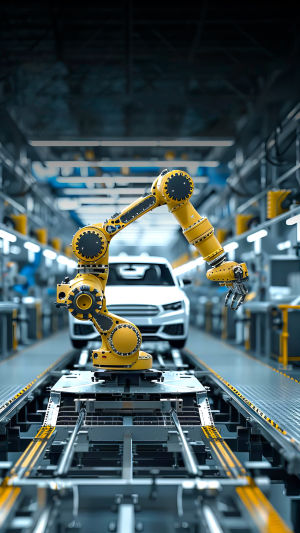Have you ever wondered why cars today are so common, yet in the early 1900s, they were a rare luxury?
The answer lies in one groundbreaking innovation that forever changed manufacturing: Henry Ford's moving assembly line.
This single shift didn't just speed up production; it made automobiles affordable, accessible, and reshaped the entire industrial world. Let's explore how this innovation revolutionized car manufacturing and why it still matters for us today.
<h3>The Critical Point Before the Assembly Line</h3>
Before Ford's innovation, cars were largely handcrafted, assembled piece by piece by skilled workers. This process was slow, costly, and inconsistent. Imagine building a complex puzzle from scratch every time — it required high skill and a lot of time.
<b>The impact of this approach was clear:</b>
<b>High costs:</b> Labor-intensive assembly drove prices up, keeping cars out of reach for most people.
<b>Slow production:</b> Only a limited number of vehicles could be made, restricting supply.
<b>Inconsistent quality:</b> Handmade parts often meant variations between cars, affecting reliability.
This "craftsman model" set a natural limit on how many cars could enter the market.
<h3>Introducing the Moving Assembly Line</h3>
Henry Ford's big idea was to flip the process upside down. Instead of workers moving around to build each car, the car itself would move along a conveyor belt, passing through specialized stations. Each worker performed a specific, repeatable task — like attaching a wheel or installing an engine part.
<b>This brought several key advantages:</b>
<b>Speed:</b> The time to build a car dropped dramatically, from over 12 hours to just 1.5 hours for a Model T.
<b>Efficiency:</b> Specialization allowed workers to become highly skilled in one task, reducing errors and waste.
<b>Cost reduction:</b> Faster production and lower labor costs meant the car's price could be slashed.
The assembly line wasn't just a new tool; it was a new way of thinking about production that prioritized flow and repetition.
<h3>Making Cars Affordable for the Masses</h3>
The ripple effect of Ford's innovation extended beyond factory walls. By cutting production costs, the price of the Model T fell from around $850 in 1908 to less than $300 by the 1920s (about $4,000 in today's money). Suddenly, owning a car was no longer just for the wealthy.
<b>What this meant for society:</b>
<b>Increased mobility:</b> More people could own cars, opening up job opportunities and travel options.
<b>Urban expansion:</b> Cities grew as suburbs became accessible by car.
<b>New industries:</b> The rise of auto-related businesses like gas stations, repair shops, and roadside diners.
In essence, Ford's assembly line democratized transportation and helped shape modern society.
<h3>Legacy and Modern Manufacturing</h3>
The assembly line concept didn't stop with Ford or cars. It sparked the growth of mass production across industries, from appliances to electronics. Today's factories blend automation with assembly principles to achieve even greater efficiency.
Yet, experts also caution that such intense specialization can lead to worker fatigue and monotony — concerns Ford addressed by doubling wages to keep morale high. This shows the balance manufacturers must strike between speed, cost, and human factors.
So next time you get into your car or see one on the street, remember: that vehicle is part of a legacy rooted in an idea to move things along faster and cheaper. Henry Ford's assembly line was more than a production method; it was a revolution that transformed how goods are made and who gets to enjoy them. Have you ever experienced how innovations in one field ripple into everyday life? How do you think modern manufacturing will evolve next?





